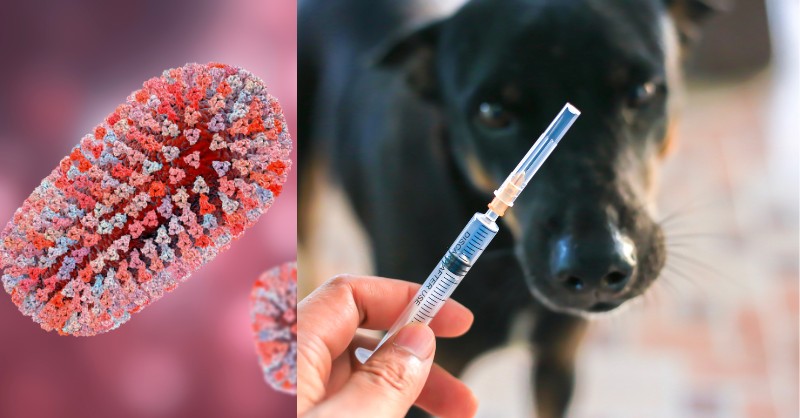Rabies Virus Transmission: How It Spreads and Prevention
Rabies virus transmission is a critical topic that demands attention due to its severe consequences. This deadly virus primarily spreads through the bite of an infected animal or exposure to its saliva. Therefore, understanding how rabies spreads, its symptoms, and prevention methods is essential to protect yourself and your loved ones
In this blog, we’ll explore the mechanisms of rabies transmission, its signs, and effective ways to prevent infection. By staying informed, you can take proactive steps to reduce the risk of this life-threatening disease.
How Does Rabies Virus Transmission Occur?
Rabies is a zoonotic disease, meaning it transfers from animals to humans. The most common mode of rabies virus transmission occurs through the bite of an infected animal. However, the virus can also enter the body if infected saliva comes into contact with open wounds, cuts, or mucous membranes like the eyes, nose, or mouth.
Animals such as dogs, bats, raccoons, and foxes frequently carry the virus. While dog bites cause most rabies transmissions in many countries, bat bites pose a significant concern in regions where bats are prevalent.
It’s important to note that rabies does not spread through casual contact, such as touching or petting an infected animal, unless saliva enters the body. In rare cases, organ transplants or inhalation of the virus in bat caves can lead to rabies transmission. However, these instances are extremely uncommon compared to bites and saliva exposure.
Symptoms of Rabies Infection
After rabies virus transmission, the infection progresses in stages. Initially, symptoms may resemble the flu, including fever, headache, and weakness. As the virus advances, more severe symptoms like anxiety, confusion, hallucinations, and difficulty swallowing emerge.
One of the most distinctive signs of rabies is hydrophobia, or the fear of water, which occurs due to throat spasms when attempting to drink. Once clinical symptoms appear, rabies is almost always fatal. Therefore, seeking immediate medical attention after potential exposure is crucial.
The incubation period for rabies can vary from a few weeks to several months, depending on factors like the location of the bite and the amount of virus transmitted. This variability makes it essential to monitor for symptoms and seek care promptly.
Preventing Rabies Virus Transmission
Prevention is the most effective way to combat rabies. Here are some key strategies to reduce the risk of infection:
- Vaccinate Pets: Ensure your dogs, cats, and other pets receive regular rabies vaccinations. This not only protects them but also reduces the risk of transmission to humans.
- Avoid Stray Animals: Steer clear of unfamiliar or wild animals, especially those displaying unusual behavior.
- Post-Exposure Prophylaxis (PEP): If bitten or exposed to saliva, wash the wound thoroughly with soap and water and seek medical care immediately. PEP, which includes a series of vaccines, can prevent the virus from taking hold.
- Pre-Exposure Vaccination: Individuals at high risk, such as veterinarians or travelers to rabies-endemic areas, should consider pre-exposure vaccination.
Additionally, educating communities about rabies and its transmission can help reduce the spread of the virus. Public awareness campaigns and accessible vaccination programs are vital in high-risk areas.
Understanding the Global Impact of Rabies
Rabies virus transmission remains a significant public health issue, particularly in developing countries where access to vaccines and medical care is limited. According to the World Health Organization (WHO), rabies causes tens of thousands of deaths annually, with children being the most vulnerable.
Efforts to control rabies include mass vaccination campaigns for dogs, public awareness programs, and improved access to post-exposure treatment. By addressing these factors, the global community can work toward eliminating rabies as a human health threat.
For example, countries like India and parts of Africa have implemented large-scale dog vaccination programs, significantly reducing rabies cases. These initiatives highlight the importance of collaboration between governments, healthcare providers, and communities.
Treatment Options After Exposure
If you suspect rabies virus transmission, timely intervention is critical. The treatment process involves:
- Wound Cleaning: Immediately wash the wound with soap and water for at least 15 minutes to reduce the virus load.
- Rabies Immunoglobulin (RIG): This provides immediate antibodies to fight the virus.
- Vaccination Series: A series of rabies vaccines are administered over several weeks to build immunity.
Early treatment is highly effective in preventing the onset of symptoms. Delaying care, however, can lead to fatal consequences. In some cases, healthcare providers may also recommend tetanus shots or antibiotics to prevent secondary infections.
Common Myths About Rabies Transmission
Misconceptions about rabies can lead to unnecessary fear or complacency. Let’s debunk some common myths:
- Myth: Rabies can spread through the air.
Fact: Rabies is transmitted through direct contact with saliva or nervous tissue. - Myth: Only dogs can transmit rabies.
Fact: While dogs are common carriers, other animals like bats, raccoons, and foxes can also spread the virus. - Myth: Rabies is curable once symptoms appear.
Fact: There is no cure for rabies after symptoms develop, making prevention and early treatment vital. - Myth: Rabies is only a problem in rural areas.
Fact: Urban areas with stray animal populations are also at risk.
The Role of Wildlife in Rabies Transmission
Wildlife plays a significant role in the spread of rabies. In North America, raccoons, skunks, and bats are common carriers of the virus. In contrast, dogs remain the primary source of rabies transmission in Asia and Africa.
Understanding the behavior of these animals can help reduce the risk of exposure. For instance, bats are nocturnal and should not be handled if found during the day. Similarly, raccoons and foxes exhibiting unusual behavior, such as aggression or disorientation, should be avoided.
Efforts to control rabies in wildlife include oral vaccination programs, where vaccine-laced baits are distributed in affected areas. These programs have shown success in reducing rabies cases among wild animal populations.
The Importance of Public Awareness and Education
Public awareness is a cornerstone of rabies prevention. Educating communities about the risks of rabies virus transmission, the importance of vaccinating pets, and the steps to take after exposure can save lives.
Schools, community centers, and healthcare facilities can serve as platforms for disseminating information. Additionally, media campaigns and social media can reach a wider audience, ensuring that more people are informed about rabies prevention.
Conclusion: Stay Informed and Protected
Rabies virus transmission is a serious but preventable threat. By understanding how the virus spreads, recognizing its symptoms, and taking proactive measures, you can significantly reduce the risk of infection. Vaccination, awareness, and prompt medical care are your best defenses against this deadly disease.
Remember, prevention is always better than cure. Stay vigilant, protect your pets, and seek immediate help if exposed to potential rabies transmission. Together, we can work toward a rabies-free future.



